The Treeline – Book Illustrations
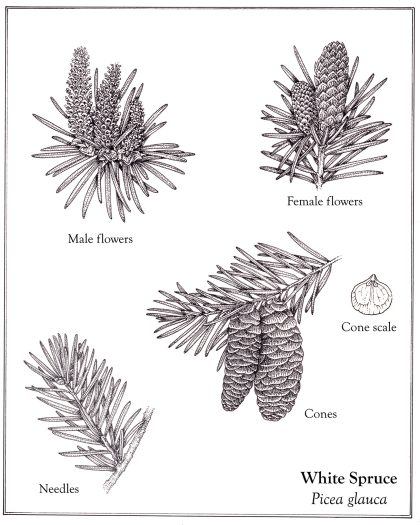
The Treeline: The last forest and the future of life on earth by Ben Rawlence is an exploration of the arboreal forests than encircle the globe. These are already being massively altered and changed by the climate emergency. It has just been published, in January 2022.
I was lucky enough to be asked to do the illustrations. Not only am I really excited to be associated with this timely and fascinating book, but the fact that Ben is a local author is also very pleasing.
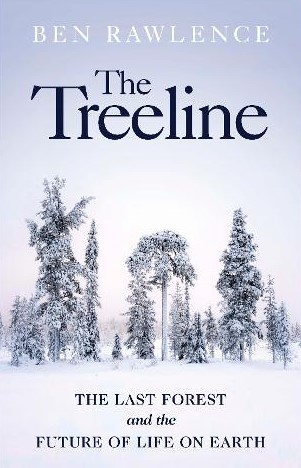
Cover of The Treeline by Ben Rawlence
The Treeline: Species list
Trees tough enough to survive in such northerly climates are not too numerous. This means the number of species needing illustrating is limited. Each species needs a picture of the tree itself, and an assortment of its leaves, cones, flower, and fruit.
Some are familiar, and feel like old friends. I’m thinking of the Rowan Sorbus aucuparia, Scots pine Pinus sylvestris, Hazel Corylus avellana and Juniper Juniperus communis. I was able to re-use some of the illustrations completed for The Living Wisdom of Trees by Fred Hageneder, thanks to an arrangement made with its publisher.
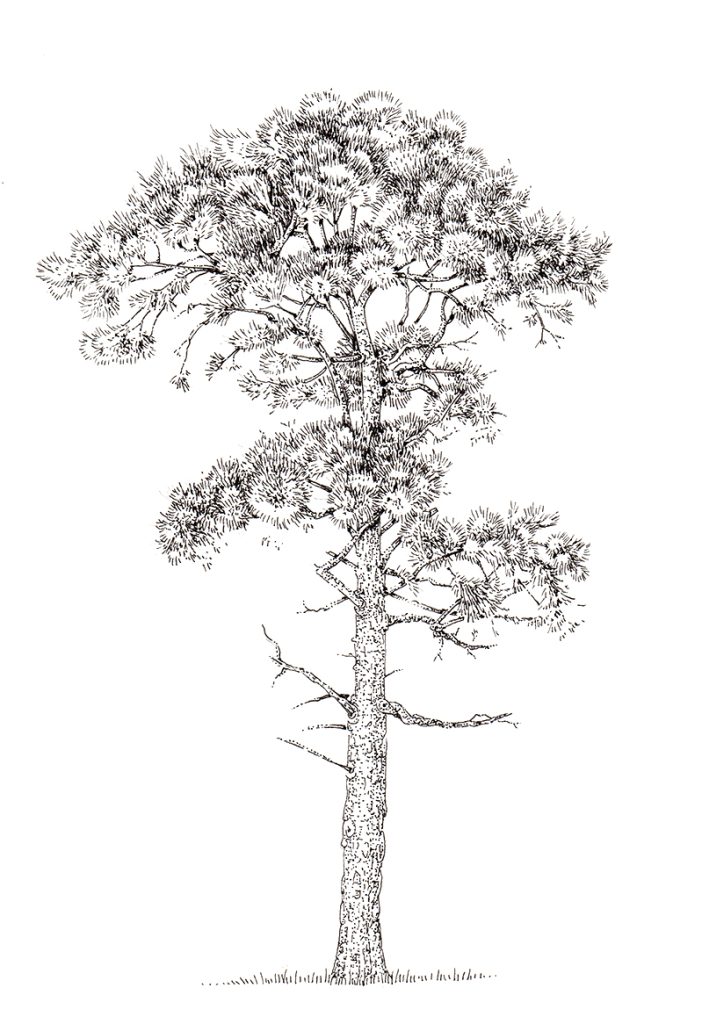
Scots pine Pinus sylvestris
In total, there are 16 species which appear in the northern boreal forests (and in the book!) The fact that I was surprised to find some growing so far north reflects holes in my botanical knowledge. I didn’t expect to see Aspen Populus tremuloides, Balsam poplar Populus balsamifera, Alder Alnus glutinosa, or Crack willow Salix fragilis on the list.
Being asked to do the illustrations
Unusually, Ben approached me himself. Normally commissioning of artwork for books is done through an art editor. I know Ben slightly as my other half has made a wonderful desk for him in the past. So when Ben got in touch to ask if I’d be interested in illustrating his books as I was “the only illustrator he knows”, I jumped at the chance. How fortunate that the only illustrator he knows also happens to have illustrated several books on trees! It was meant to be. It was good to have Ben as my commissioner as he knew exactly what features to emphasize in the illustrations.
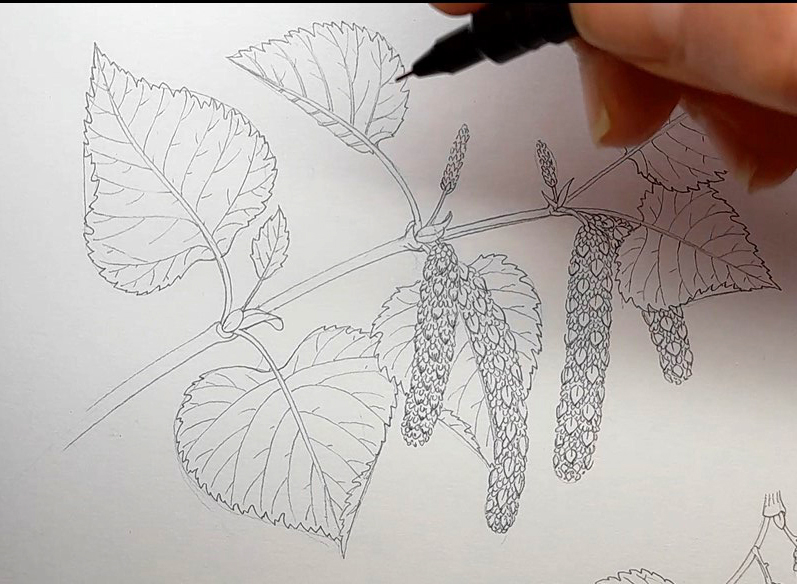
Inking up the pencil rough of Downy birch Betula pubescens
The Treeline: Tough trees in difficult conditions
Many of the trees growing at this northern limit of the boreal forests are small and stunted by the cold. This condition occurs across species, and is know as Krummhloz. Trees can only grow close to the ground, or beneath snow. This is cause the arctic winds above are so damaging. Resulting trees are often thick at a lower level. Emergent branches and trunks are spindly, sparse, and thin.
I try to include aspects of this in the illustrations, but make sure the trees still look species specific. In reality, the sprawling lower vegetation is more pronounced. Perhaps I err on the side of drawing more species-typical specimens.
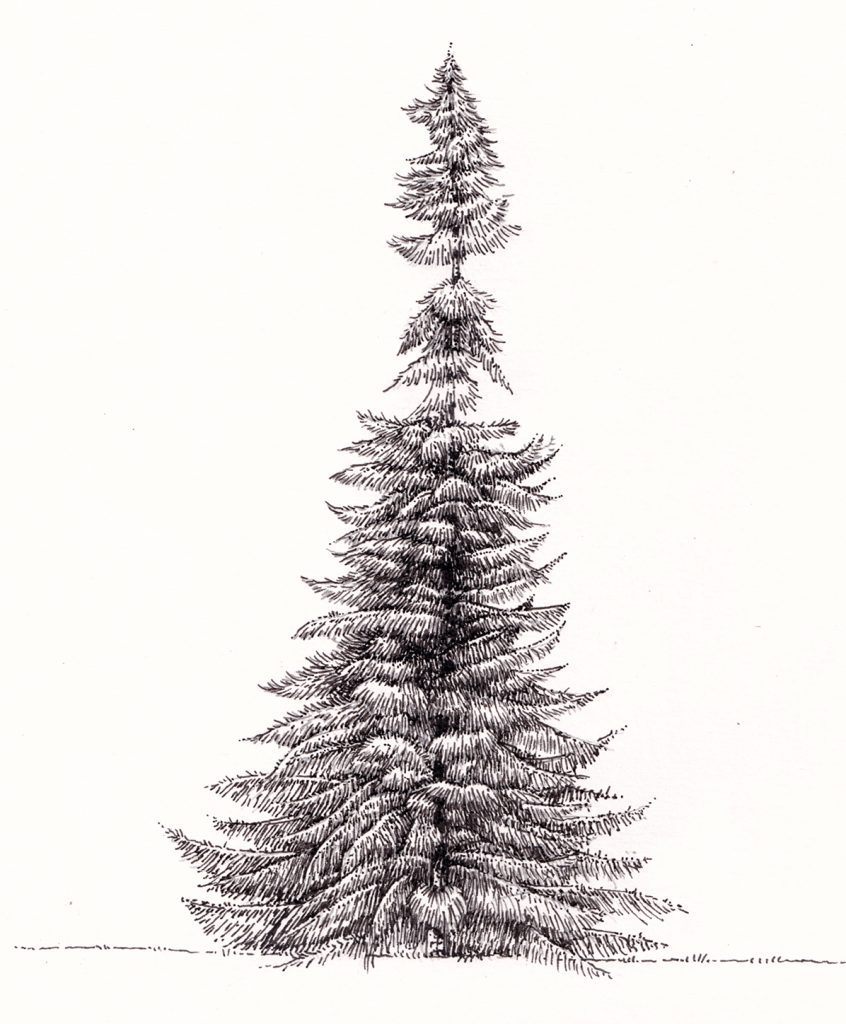
Black Spruce Picea marinara tree
Comparisons
Some of the trees need to be compared so that the subtle differences between species can be clarified. This is tricky. You’re trying to work with reference of trees from this particular habitat, often with Krummholz. Details have to be botanically correct. The Black and White spruce are particularly difficult to untangle, not least cause sometimes the image reference online is attributed to the wrong species!
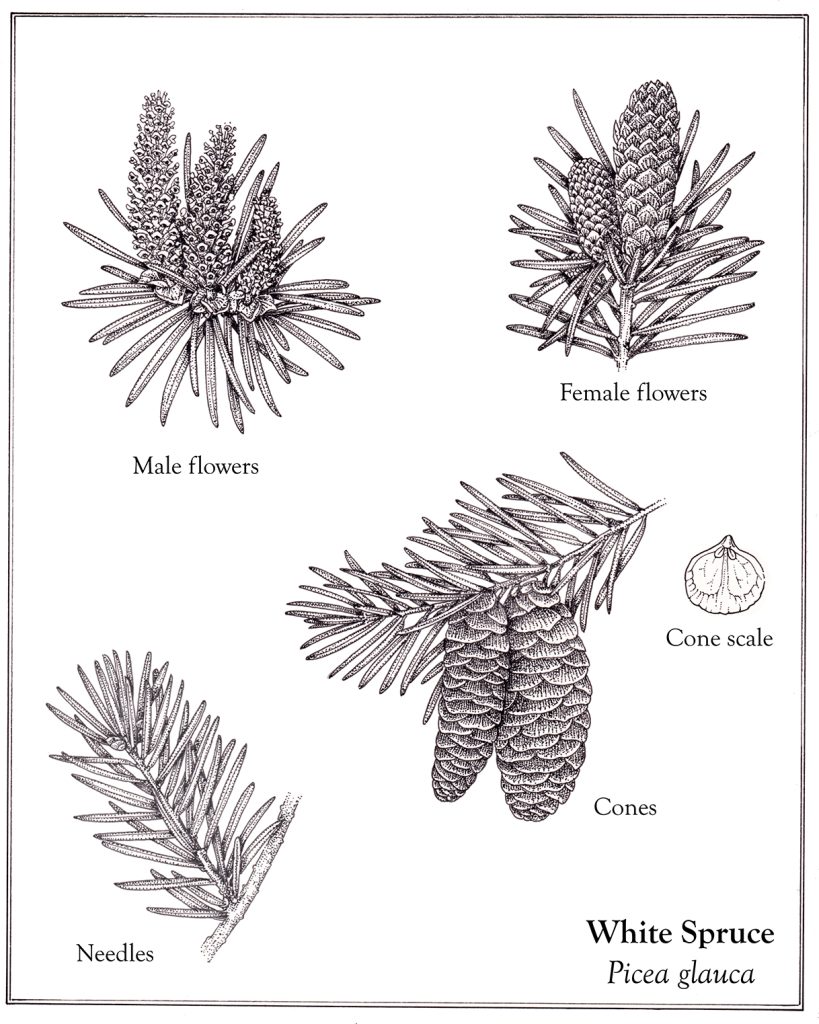
White spruce Picea glauca
The cones are very different, but differences between female flowers in these two are hard to pinpoint. Luckily, the male flowers are simpler. White spruce ones grow erect, but they’re pendulous in Black spruce.
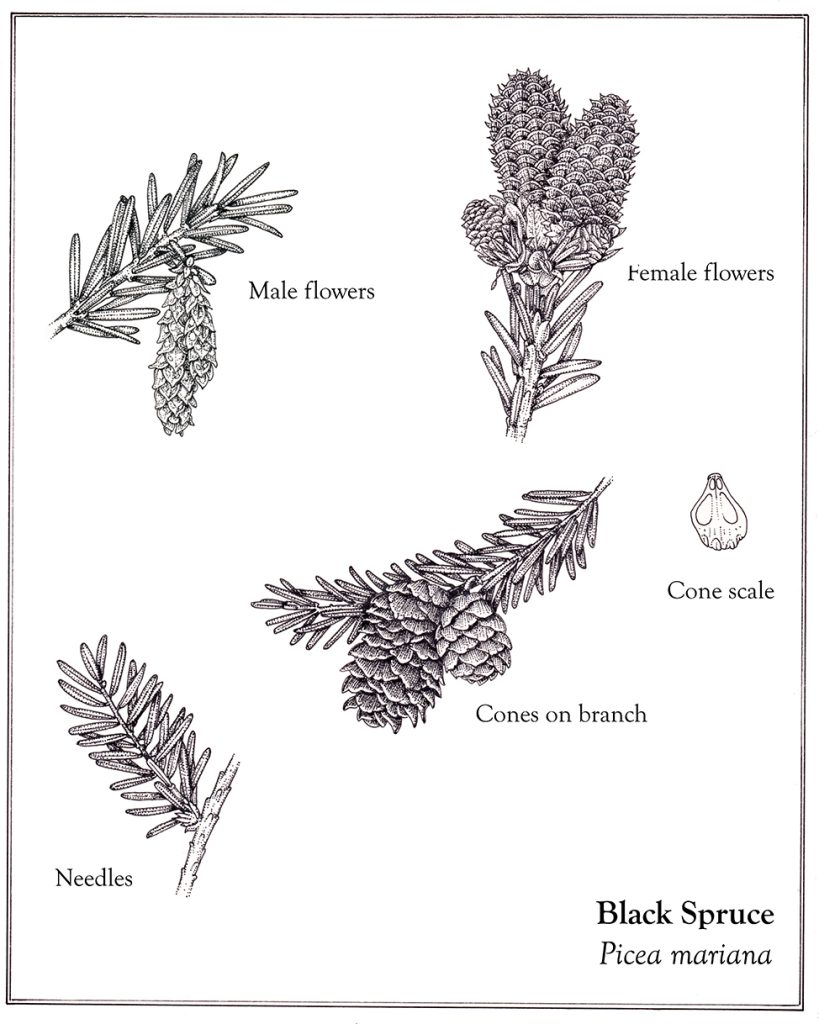
Black spruce Picea mariana
The Treeline: Drawing conifers vs Deciduous trees
Drawing a deciduous tree is harder than drawing a conifer. With Pine and Spruce and Larch, you represent the needles with lots of tiny ink lines. The tonality is easy to work into, and the textures flow readily from the pen.
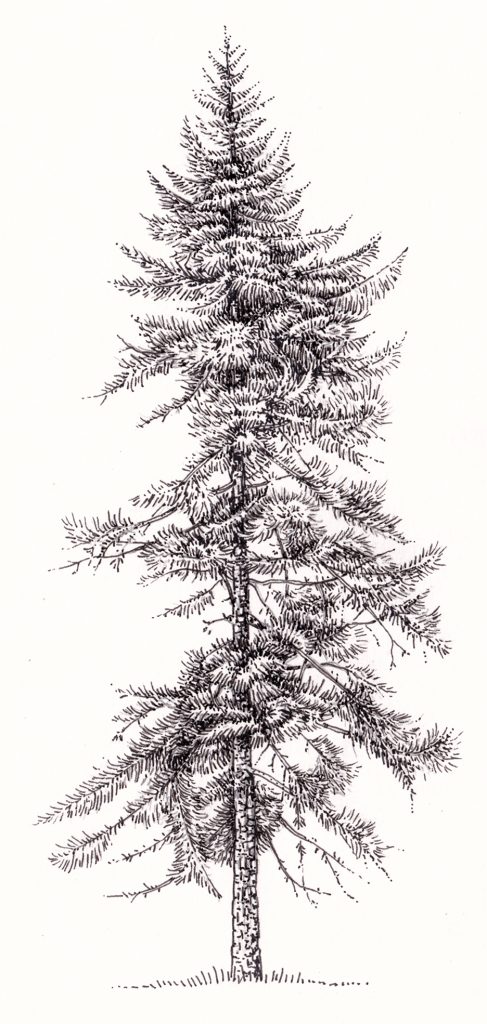
Siberian larch Larix sibirica
Deciduous trees are more nebulous. Shadows cast by elliptical or lobed leaves are less predictable, and giving the impression of depth and thickness of vegetation is far harder. It’s easy to make the edges of the foliage too crisp, or to fail to balance internal shadows.
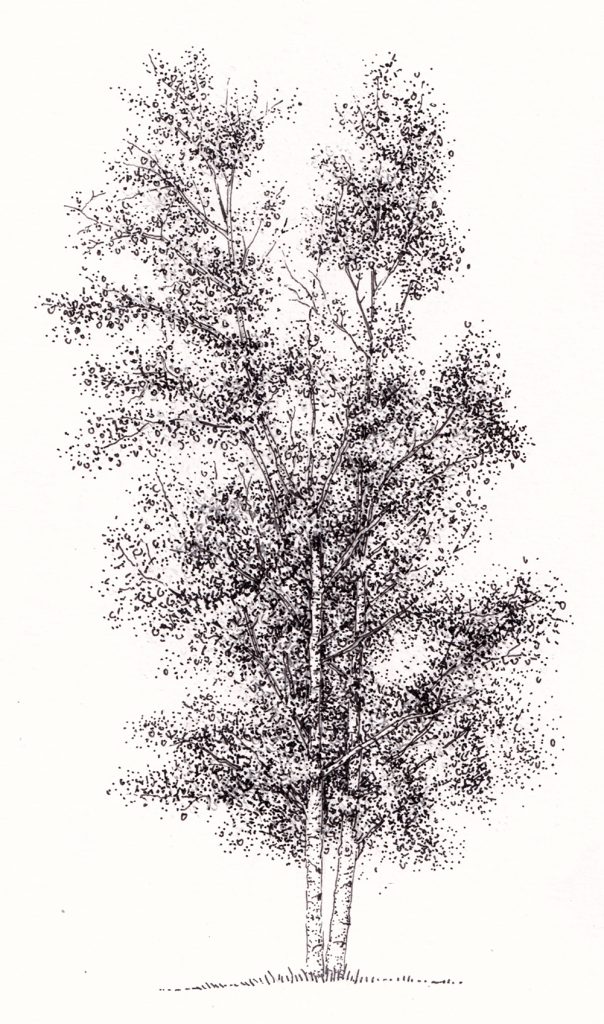
Downy Birch Betula pubescens
However, when it comes to leaves, fruit, and flowers the situation is reversed. Give me a catkin over a larch strobilus any day!
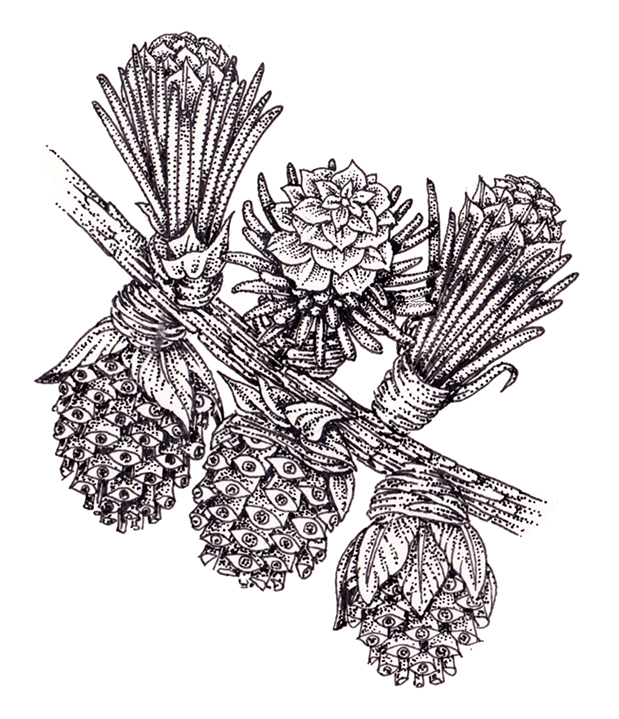
Dahurian larch Larix gmelinii strobilus and male flowers
The learning curve with the conifers is a steep one. I understand the anatomy of cones, but for this job I had to learn about strobilus and the different male and female flowering structures of conifers. “You should know this already!” I hear you cry, “having illustrated lots of Pine and Spruce trees before!” And you’re right. But I don’t.
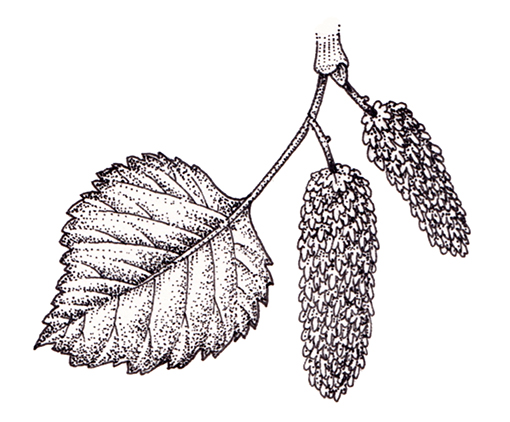
Downy birch Betula pubescens fruiting catkins
For more on the Downy birch, check out my blog and youtube film showing me inking up the catkins and leaves in real time and discussing my processes.
The Treeline: Layout
Ben and the team want the details of each tree to sit together neatly on the page. I provided them with all the different elements separately, and in one layout. As it turns out (and as expected) the design team alter my layouts, but this is fine with me. The laying out is actually quite fun. I love how much smarter the illustrations look when surrounded by a border, and annotated. Even though my layouts weren’t used in the book, I know it’s given suggestions to the designers that may prove useful.
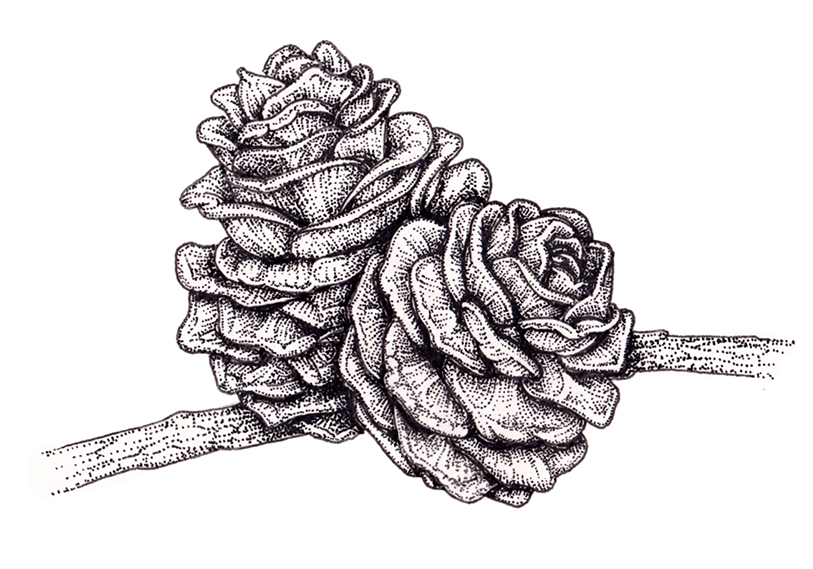
Dahurian larch Larix gmelinii cones
And here are the same cones along with the other accompanying illustrations
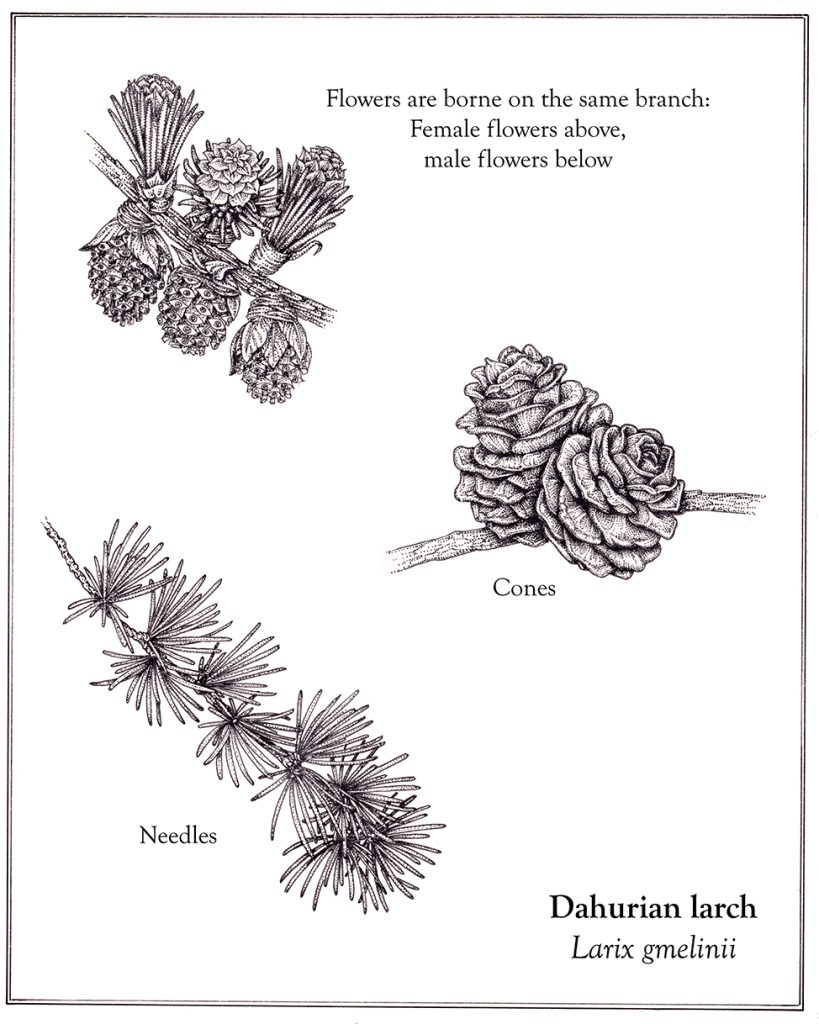
Dahurian larch Larix gmelinii details
Conclusion
I haven’t been able to read the book yet, but can’t wait to get my hands on a copy. There are a lot of books coming out which focus on the environment, and how climate change and man are altering the natural balance. Although it can feel depressing, I truly believe these messages need to get out there. The variety of habitats which are being changed is as diverse as life itself, and I’m keen to know more about the northern edge of the arboreal forest, and the dangers the climate emergency are causing. This extraordinary forest even appeared on David Attenborough’s latest series, “The Green Planet” in the “Seasonal |World’s” episode, and seeing film of the snow covered trees was wonderful, and strangely moving. Here’s rather a good review from The Guardian newspaper.
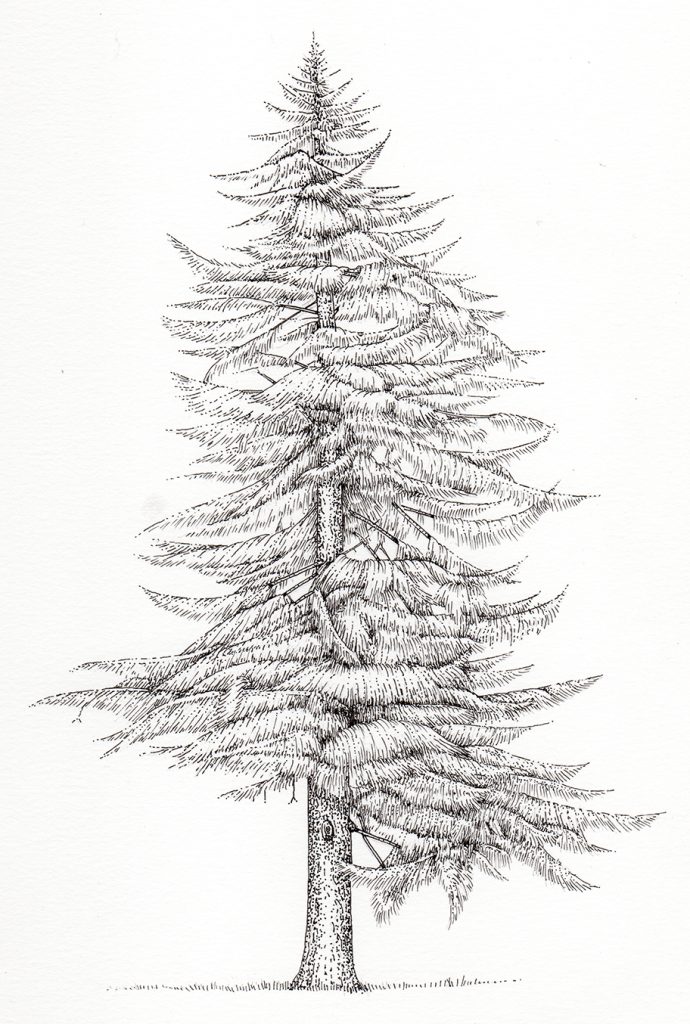
Larch Larix decidua or europea
Illustrating A Life on Our Planet by David Attenborough, and another upcoming title on the importance and fragility of life on earth (“The Hidden Universe” by director of Kew Gardens Alexandre Antonelli); I feel like I’m somehow involved in a small way in getting these messages out to the public. And that matters to me. It makes me proud to be associated with important and timely books like The Treeline by Ben Rawlence.
Here’s the film about illustrating the catkins and leaves of the Downy Birch:

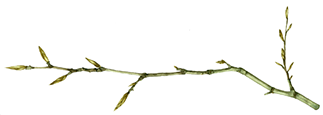
Really interesting Lizzie, and I absolutely love these illustrations!
Thank you Victoria. x
Good morning Lizzie, beautiful illustrations in ink, with a great smattering of arboreal knowledge as well.
Regards Peter
Thank you Peter! And for the viola comment, too. I think you’re right. x
Wonderful as always.
Thank you, Beth x
The illustrations in The Treeline are absolutely captivating! Your attention to detail and ability to capture the essence of each tree species really brings the book to life. Thanks for sharing this process—it’s fascinating to see the blend of art and nature come together so beautifully!
Thanks so much! Glad you like them
What a wonderful exploration of The Treeline and its stunning illustrations! The way the artwork brings the story to life is absolutely magical. Each illustration adds a new layer of depth, inviting readers to fully immerse themselves in the world of the book. It’s amazing how the illustrations not only enhance the narrative but also evoke a sense of wonder and connection with nature.
Hi Jack
Thank you so much! Such effusive feedback for some pen and ink botanical studies, Im so glad you liked them.
yours Lizzie